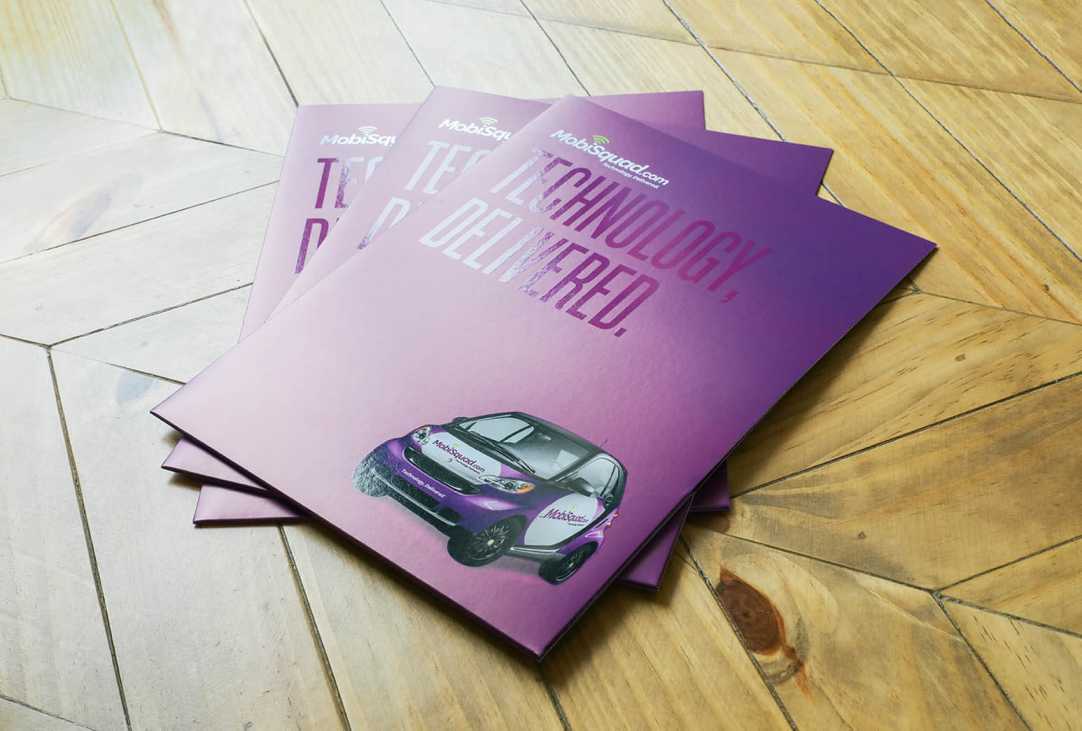YOUR COMPLETE TRADESHOW MARKETING CHECKLIST

Planning to exhibit at a trade show or conference involves managing numerous tasks and projects. Here’s a timetable to assist you in planning your company’s presence at the next sponsored event:
PRE-CONFERENCE
6 MONTHS - 1 YEAR
- Establish your goals and budget by determining how many leads you need to come home with to make a return on your trade show investment. Realistically, this is likely to be less than 5% of the entire audience that will end up as sales qualified leads.
- Sign the exhibit contract and select your booth location as early as possible. Typically, the sooner you commit, the better pricing and booth placement you can secure. Don’t hesitate to negotiate fees and packages to get the best deal. When choosing your booth, aim for a location near the entrance, a main aisle, or by food and beverage stations to maximize foot traffic and visibility.
- Choose what you want to say and start planning. Describe the kind of people you want to attract at the event. This helps decide how your booth should look, what marketing materials to use, and what to post on social media.
3 - 6 MONTHS
- Create and improve marketing materials. Get a few design ideas for your booth display with your chosen message, then improve the best one. Attendees will need something to take with them to remember your meeting. While your usual brochure might be okay, it’s better to tailor it to the specific audience and event, matching your booth’s appearance for better recall.
- Book your travel arrangements. Hotels often have limited rooms available for conference attendees, and they can sell out quickly as the event date approaches. Similarly, airline ticket prices tend to be more reasonable when booked well in advance.
1 - 3 MONTHS
- Order your marketing materials early to avoid last-minute rush charges and unnecessary stress. If the materials need to be shipped to the show, ensure you have enough time for ground shipping rather than expensive overnight options.
- Secure contracts for services such as carpeting, electrical, internet, catering and other booth necessities. Take advantage of exhibitor discounts by ordering early to save money and ensure everything is in place for a successful exhibit.
- Plan your direct mail and email campaigns well in advance. Have them designed and ready to go for the day you receive the attendee list from the conference organizers. Then, simply hand off the list to your vendor and let the messages roll out smoothly!
- Choose your giveaway item wisely. A promotional product with your logo can draw attendees to your booth, especially those who enjoy collecting freebies. Since many of these items are manufactured overseas, allow plenty of time for international shipping to ensure they arrive on schedule.
WEEKS BEFORE CONFERENCE
- Start networking by having your attending salespeople reach out to qualified prospects via email and LinkedIn. They can invite them to dinner or simply connect and follow each other online to initiate valuable relationships. schedule.
- Packing and shipping -Once you have received all your materials, create a packing list to ensure you have everything needed for a successful exhibit. Consider including tool kits in your trade show shipments, containing essentials like screwdrivers, extension cords, screen cleaners, packing tape, and scissors, to equip your sales team with everything they might need.
- Review the conference schedule and plan your agenda accordingly. Determine how you will spend your time outside of exhibiting. Consider attending relevant sessions, networking events, or meeting with customers over coffee. Having a clear plan will help you make the most of your time at the conference.
- Get social by researching if the event has any relevant hashtags. Schedule some social media posts using those hashtags to ensure your message reaches attendees who are monitoring the feeds. This can help increase your visibility and engagement during the event.
DURING CONFERENCE
- Collect leads and take thorough notes. Implement an effective system for gathering information from attendees. Upon returning home, it can be challenging to recall details from each person you met and what was discussed. Consider using a lead scanning app to streamline the process, especially if you prefer not to manually enter information from scraps of paper or business cards.
AFTER CONFERENCE
- Execute your follow-up mail and email campaigns promptly. Ensure that your post-conference email and mail campaigns are designed and ready to go as soon as you receive the post-attendee mailing list. This will help maintain momentum and engagement with your leads after the event.
- Post a blog recap of the conference. Sharing your key takeaways from the event can serve as valuable marketing content, suitable for social media or inclusion in your monthly newsletter. Providing a summary of the conference events along with insights gleaned from keynote speakers can be particularly appreciated by those who were unable to attend, adding value to your audience’s experience.
- Evaluate the return on investment (ROI) and make a decision for next year. Assess whether the booth traffic generated enough meetings or sales to justify the expense. If not, consider whether the conference aligns with your product and goals. It may be time to explore other opportunities that offer better value for your business.
Anything missing from my tradeshow marketing checklist? Let me know in the comments below.
Looking for more tradeshow advice? Read this: 6 of the Worst Trade Show Marketing Mistakes to Avoid
Recent Posts
ONE STEP PRINT LLP
YOUR COMPLETE TRADESHOW MARKETING CHECKLIST

Planning to exhibit at a trade show or conference involves managing numerous tasks and projects. Here’s a timetable to assist you in planning your company’s presence at the next sponsored event:
PRE-CONFERENCE
6 MONTHS - 1 YEAR
- Establish your goals and budget by determining how many leads you need to come home with to make a return on your trade show investment. Realistically, this is likely to be less than 5% of the entire audience that will end up as sales qualified leads.
- Sign the exhibit contract and select your booth location as early as possible. Typically, the sooner you commit, the better pricing and booth placement you can secure. Don’t hesitate to negotiate fees and packages to get the best deal. When choosing your booth, aim for a location near the entrance, a main aisle, or by food and beverage stations to maximize foot traffic and visibility.
- Choose what you want to say and start planning. Describe the kind of people you want to attract at the event. This helps decide how your booth should look, what marketing materials to use, and what to post on social media.
3 - 6 MONTHS
- Create and improve marketing materials. Get a few design ideas for your booth display with your chosen message, then improve the best one. Attendees will need something to take with them to remember your meeting. While your usual brochure might be okay, it’s better to tailor it to the specific audience and event, matching your booth’s appearance for better recall.
- Book your travel arrangements. Hotels often have limited rooms available for conference attendees, and they can sell out quickly as the event date approaches. Similarly, airline ticket prices tend to be more reasonable when booked well in advance.
1 - 3 MONTHS
- Order your marketing materials early to avoid last-minute rush charges and unnecessary stress. If the materials need to be shipped to the show, ensure you have enough time for ground shipping rather than expensive overnight options.
- Secure contracts for services such as carpeting, electrical, internet, catering and other booth necessities. Take advantage of exhibitor discounts by ordering early to save money and ensure everything is in place for a successful exhibit.
- Plan your direct mail and email campaigns well in advance. Have them designed and ready to go for the day you receive the attendee list from the conference organizers. Then, simply hand off the list to your vendor and let the messages roll out smoothly!
- Choose your giveaway item wisely. A promotional product with your logo can draw attendees to your booth, especially those who enjoy collecting freebies. Since many of these items are manufactured overseas, allow plenty of time for international shipping to ensure they arrive on schedule.
WEEKS BEFORE CONFERENCE
- Start networking by having your attending salespeople reach out to qualified prospects via email and LinkedIn. They can invite them to dinner or simply connect and follow each other online to initiate valuable relationships. schedule.
- Packing and shipping -Once you have received all your materials, create a packing list to ensure you have everything needed for a successful exhibit. Consider including tool kits in your trade show shipments, containing essentials like screwdrivers, extension cords, screen cleaners, packing tape, and scissors, to equip your sales team with everything they might need.
- Review the conference schedule and plan your agenda accordingly. Determine how you will spend your time outside of exhibiting. Consider attending relevant sessions, networking events, or meeting with customers over coffee. Having a clear plan will help you make the most of your time at the conference.
- Get social by researching if the event has any relevant hashtags. Schedule some social media posts using those hashtags to ensure your message reaches attendees who are monitoring the feeds. This can help increase your visibility and engagement during the event.
DURING CONFERENCE
- Collect leads and take thorough notes. Implement an effective system for gathering information from attendees. Upon returning home, it can be challenging to recall details from each person you met and what was discussed. Consider using a lead scanning app to streamline the process, especially if you prefer not to manually enter information from scraps of paper or business cards.
AFTER CONFERENCE
- Execute your follow-up mail and email campaigns promptly. Ensure that your post-conference email and mail campaigns are designed and ready to go as soon as you receive the post-attendee mailing list. This will help maintain momentum and engagement with your leads after the event.
- Post a blog recap of the conference. Sharing your key takeaways from the event can serve as valuable marketing content, suitable for social media or inclusion in your monthly newsletter. Providing a summary of the conference events along with insights gleaned from keynote speakers can be particularly appreciated by those who were unable to attend, adding value to your audience’s experience.
- Evaluate the return on investment (ROI) and make a decision for next year. Assess whether the booth traffic generated enough meetings or sales to justify the expense. If not, consider whether the conference aligns with your product and goals. It may be time to explore other opportunities that offer better value for your business.
Anything missing from my tradeshow marketing checklist? Let me know in the comments below.
Looking for more tradeshow advice? Read this: 6 of the Worst Trade Show Marketing Mistakes to Avoid






